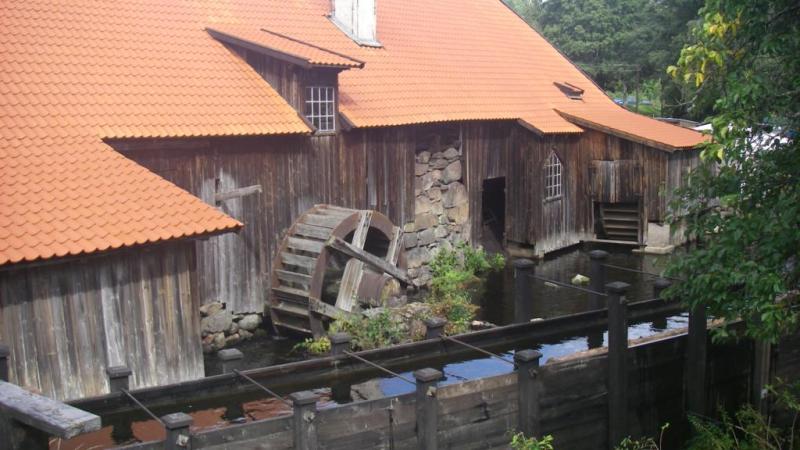Visit any renaissance fair across the United States this fall and you’ll undoubtedly find a blacksmith. He’ll be sweating away in a tent, pounding on a piece of glowing steel set against an anvil. While the practice of the single blacksmith endures today, high-production ‘works of days past required increasing amounts of muscle. The more tireless the muscle, the better. The manual efforts of the blacksmith were replaced by huge hammers, and the blacksmith needed only to turn the piece between impressions and maintain a healthy respect for the awesome crushing power of the machine.
Last week, blacksmith enthusiasts completed restoration work on the Häfla hammer in Finspang, Sweden. The 333 year old hydraulic hammer hadn’t been used since 1924, when operations ceased at the Häfla Hammerforge. The ‘works was built in 1682 and used the German method of forging, which had been introduced to Sweden in the 1500s. Steel production was revolutionized in the 1800s by the Bessemer process, which resulted in a much stronger product.
[via reddit]
Retrotechtacular is a weekly column featuring hacks, technology, and kitsch from ages of yore. Help keep it fresh by sending in your ideas for future installments.
















There is a vertical video of it being used to pound metal here:
https://www.youtube.com/watch?v=PCrlp_O9-S8
Wouldn’t want to get my thumb smashed by that hammer…
“Wouldn’t want to get my thumb smashed by that hammer…” … yup… it would be pretty thor…
Thor thumb… see what I did there…
Lol. :)
I award thee 10,000 internets!
Right now I want to CLAW your eyes out for that one.
I THORoughly enjoyed that joke.
my head is THOR as a result of these jokes
It should be “Finspång” (pronounced “finn-spong”). The town has a long industrial history, from making canons to gas turbines.
I my technical high school, we had a blacksmith course and there was a pneumatic – compared to this monster small – hammer. Working on that machines is frighting as hell. You have a foot pedal which let the oscillating hammer come down until it touches the workpiece, then you could control the power of the blows with the angle of the pedal, but it was so sensitive so you have to be careful not to make the workpiece totally flat or even split it or to pull out the workpiece to save it. Either way touching of the hammer with the ambos – both hardened surfaces – was not favorable because it was audible through the whole workshop departments, and this workshop building was huge (for approx. 200 to 300 students).
Concluding, it was a mind resisting experience, but IMHO forging by hand aka “Blood, Sweat and Tears” is more fun.
(Only thing more dangerous: surface grinding machine with huge back carriage for automatic movement; there were some holes in the wall next to it…)
https://www.youtube.com/watch?v=VHY6M82RZ4w
Now THAT’s retro!